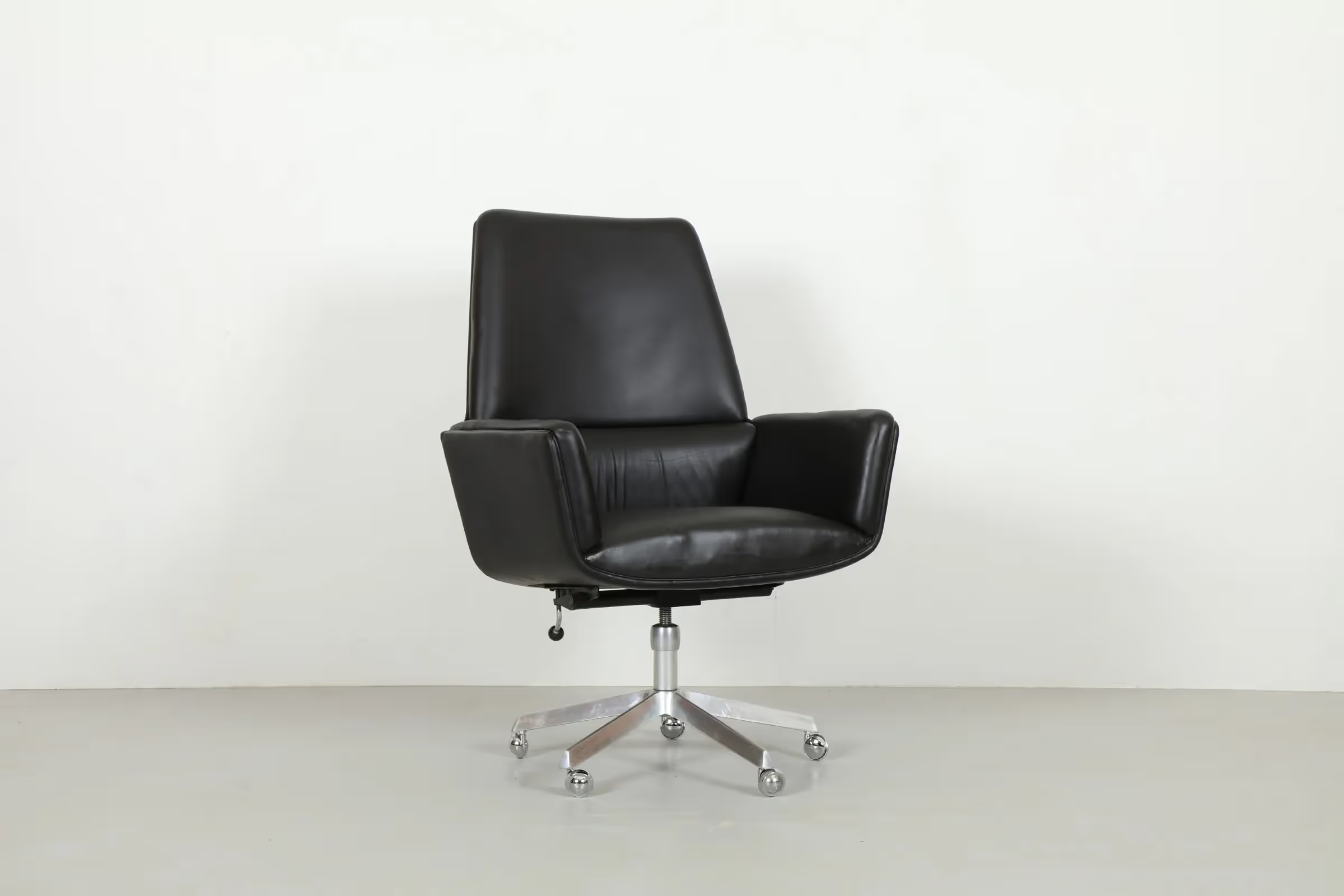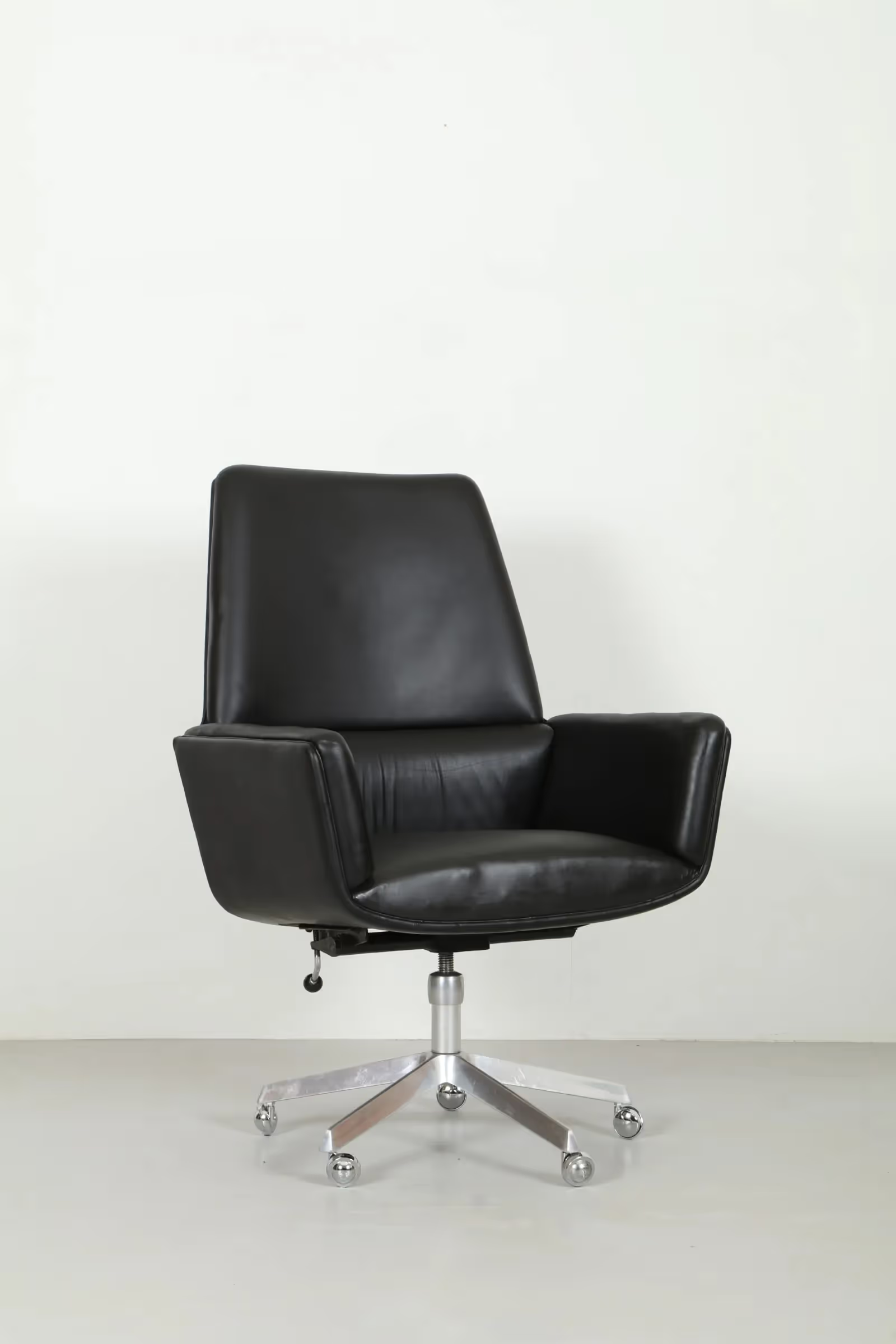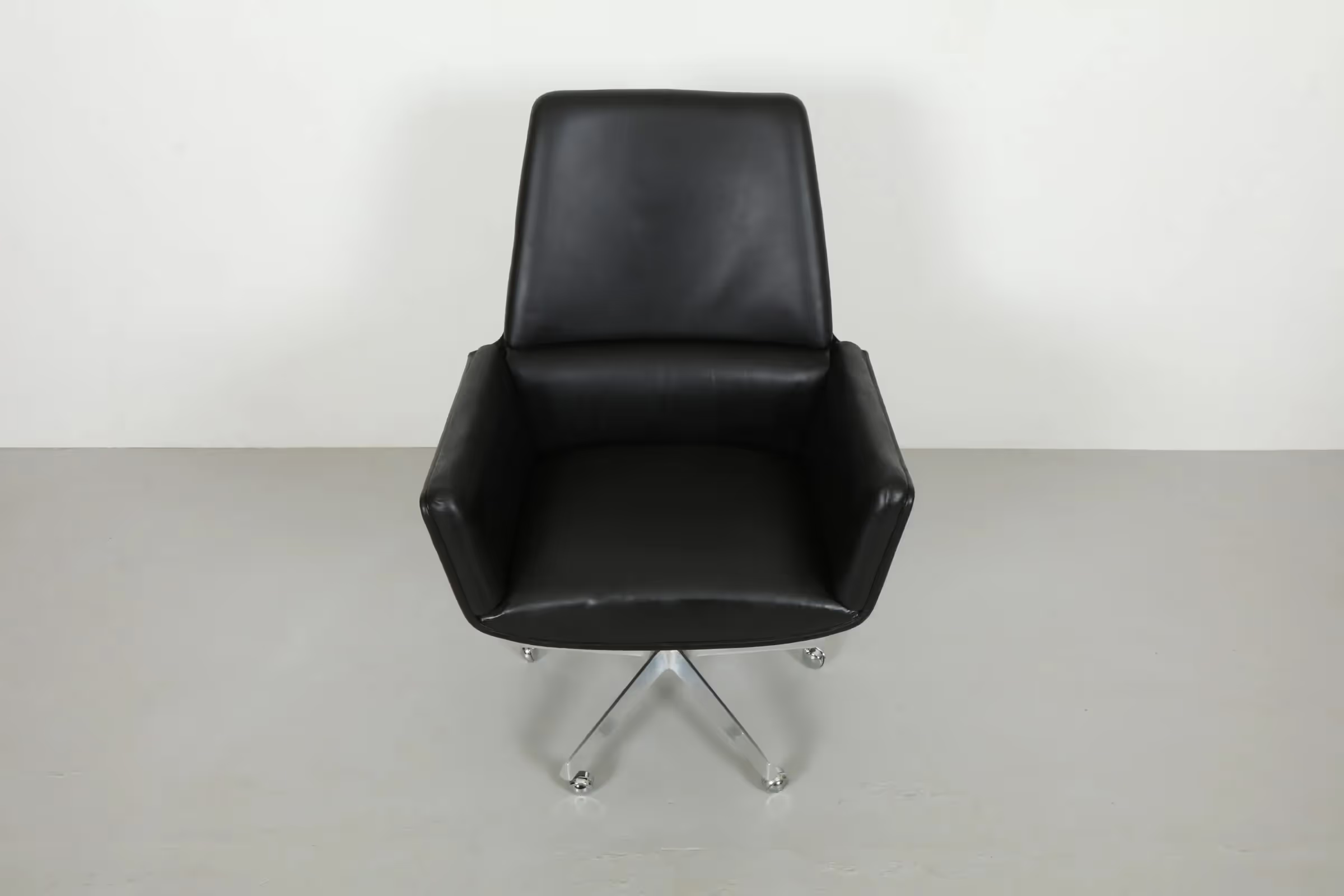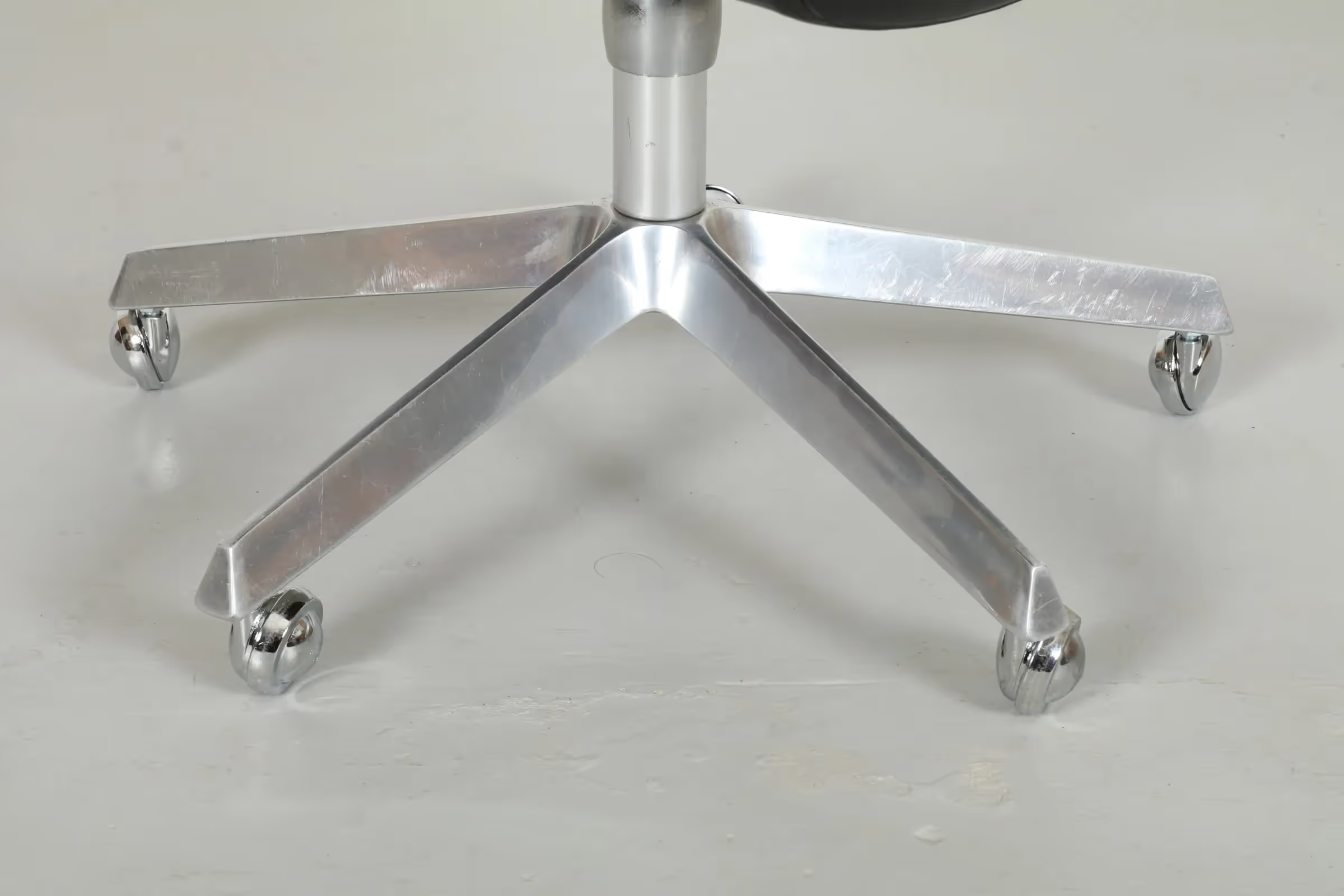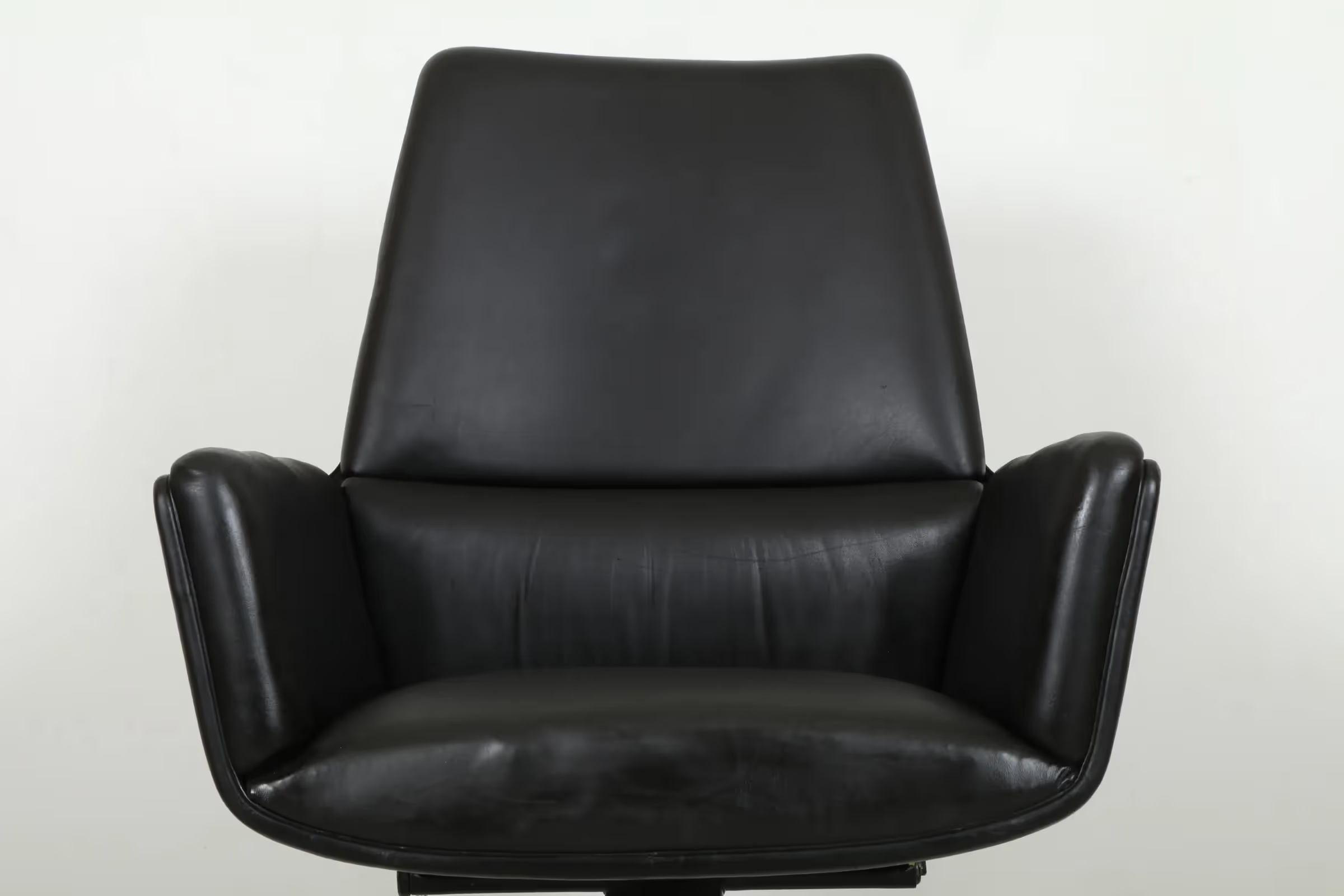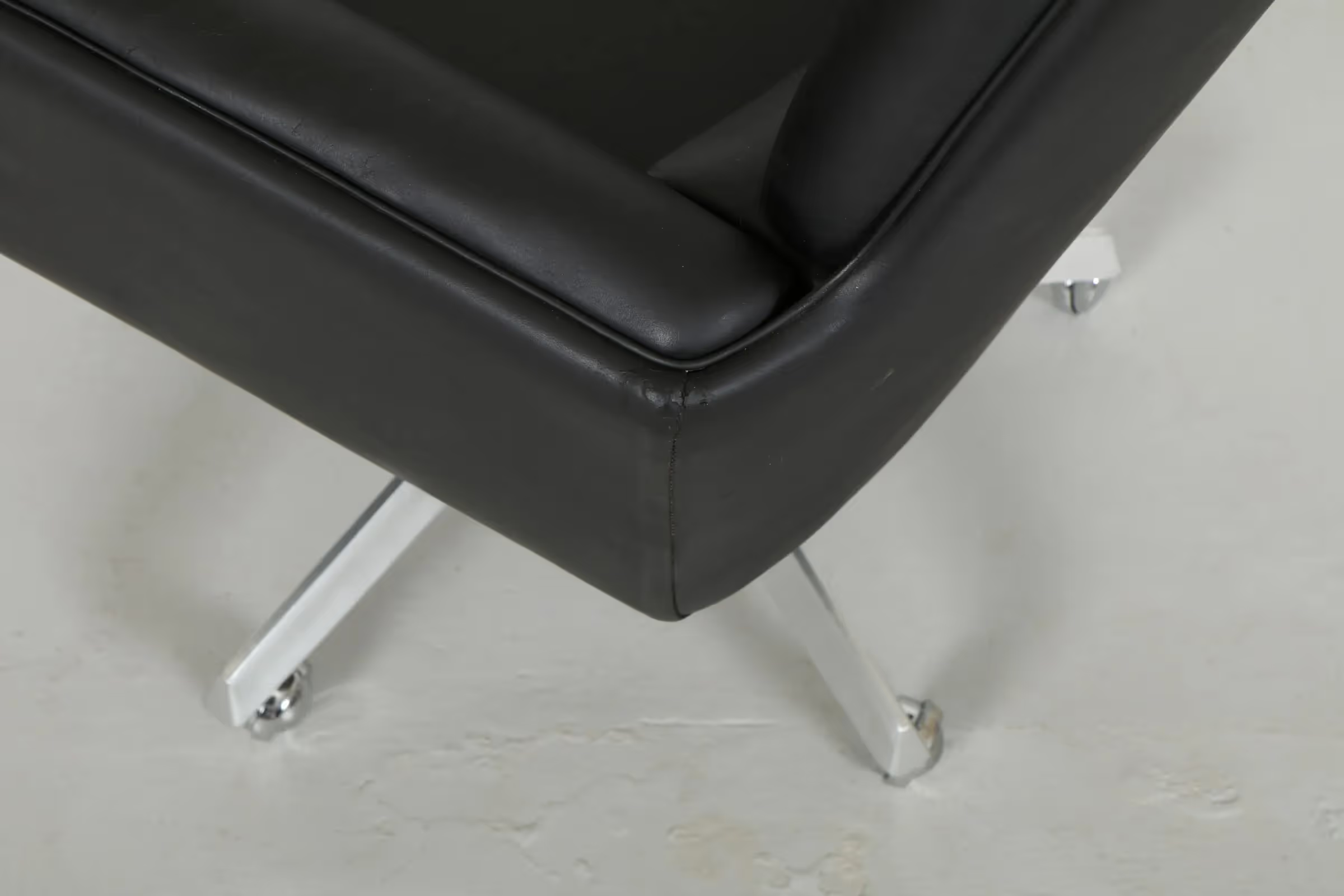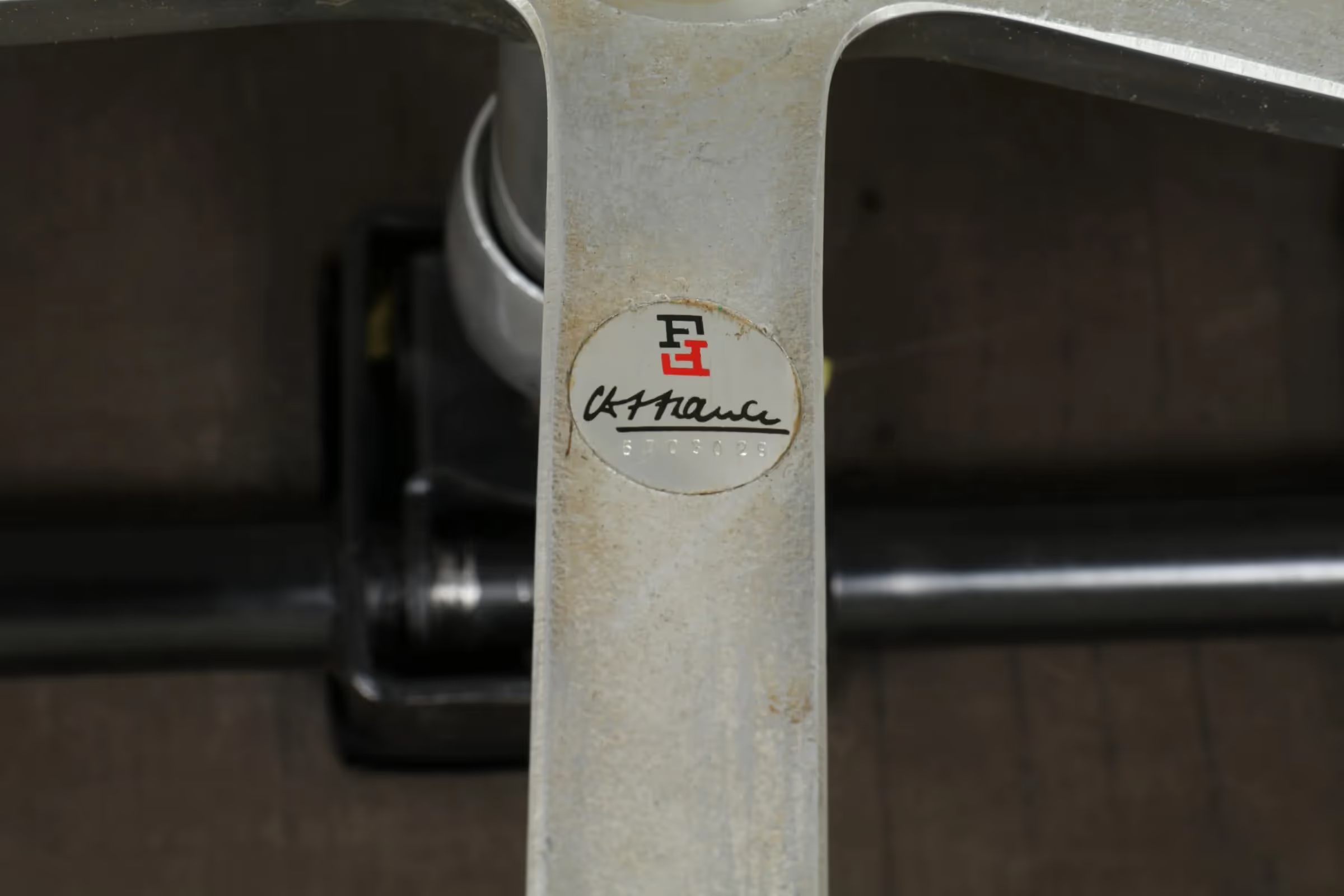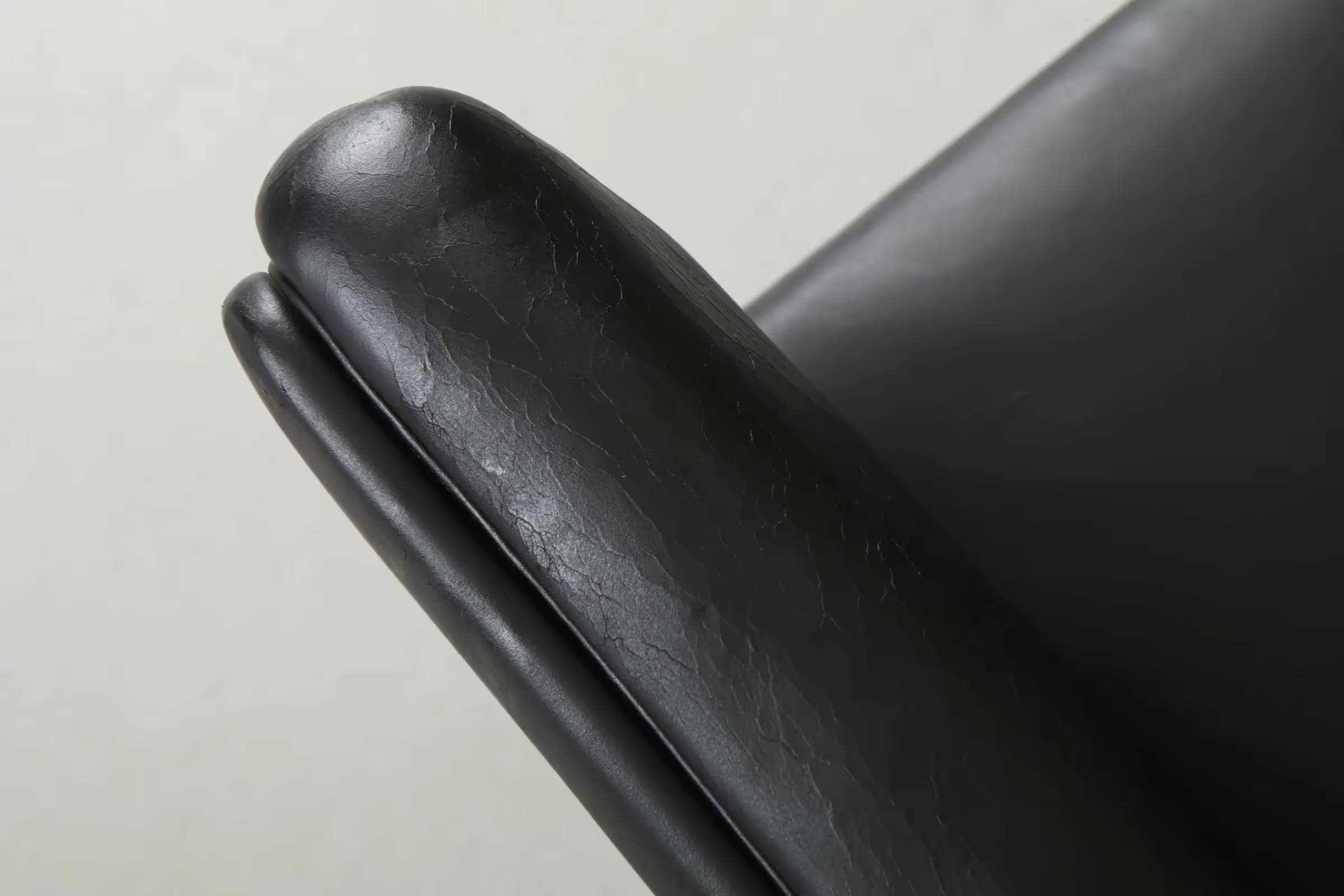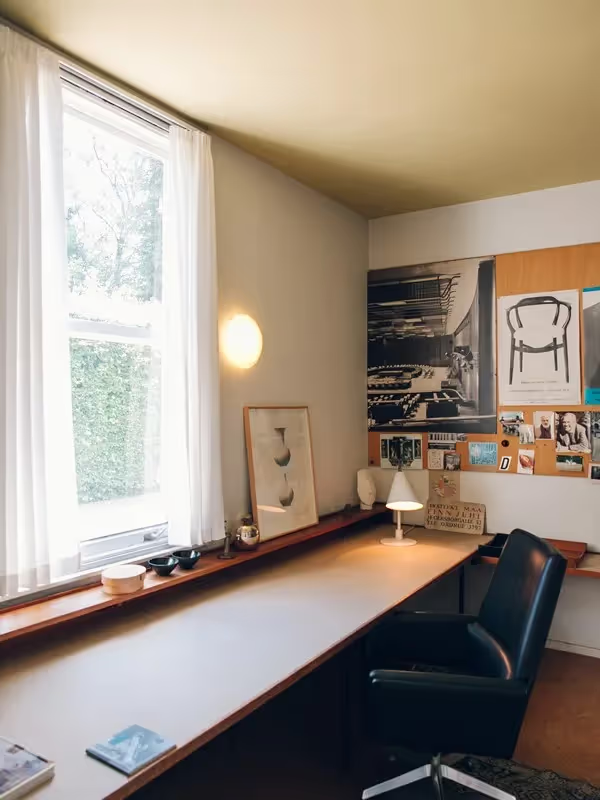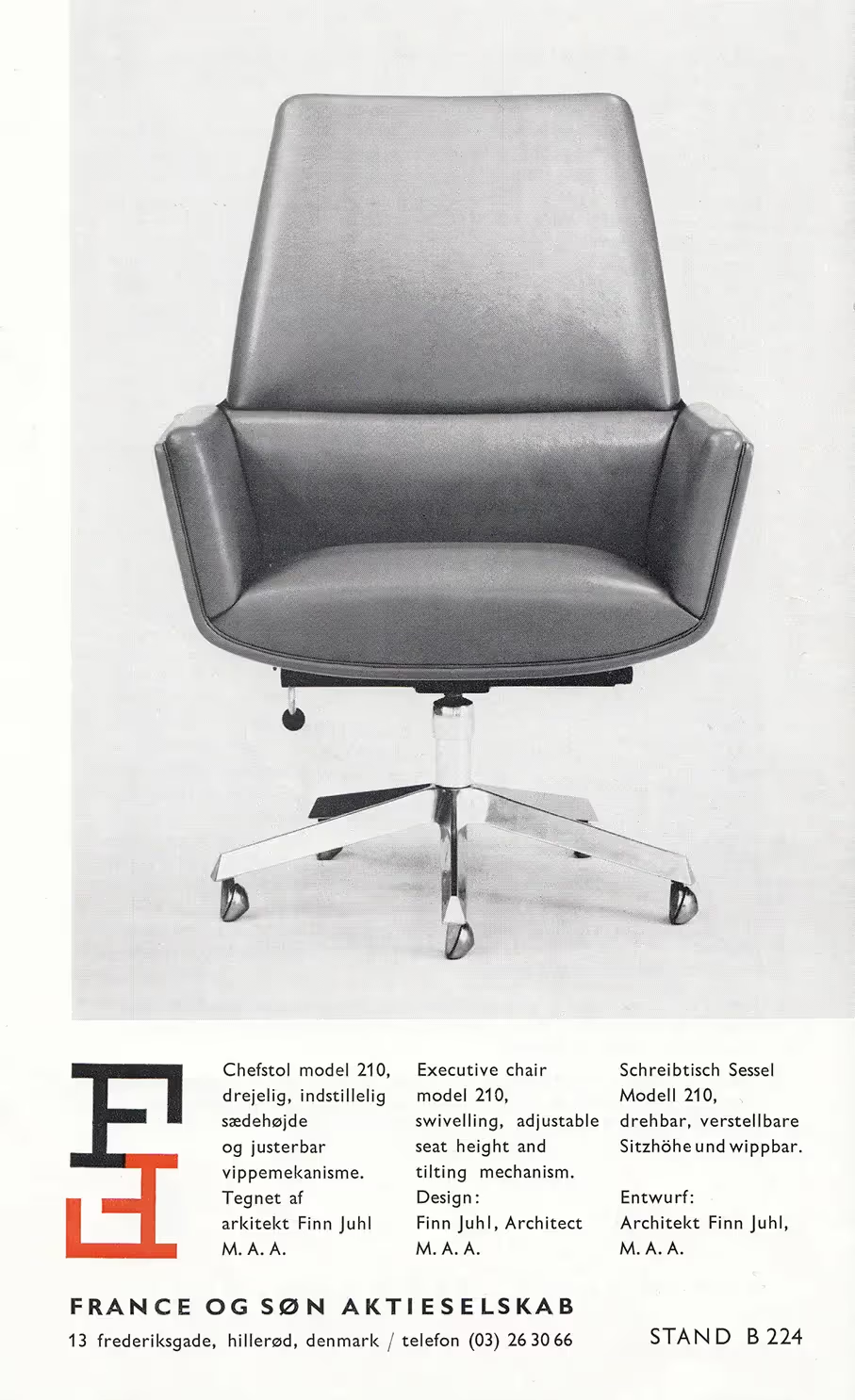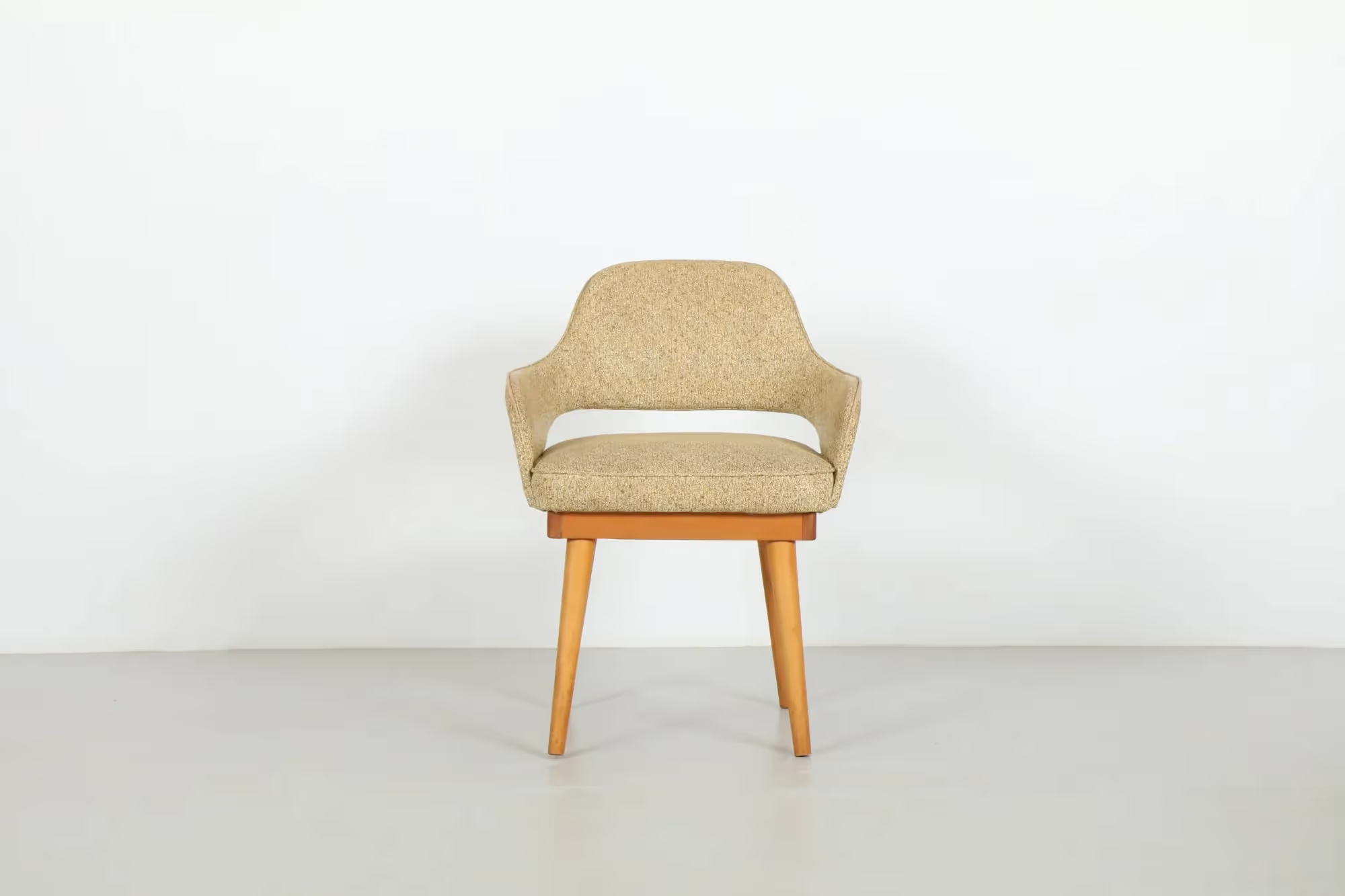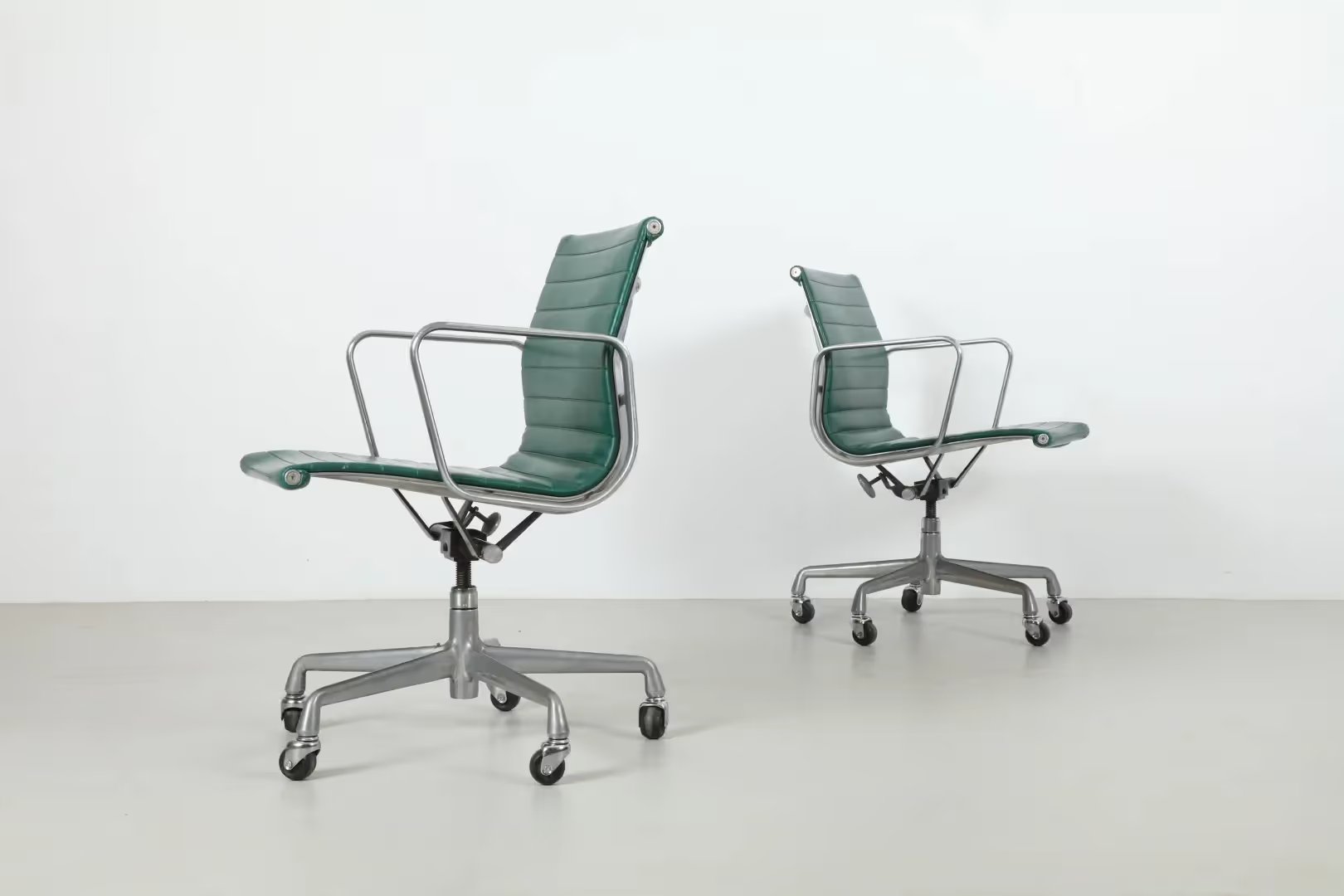Rare Finn Juhl 'Model 210' Executive Office Chair for France & Son
The Model 210 Executive Office Chair is a rare find, designed by the renowned furniture designer Finn Juhl in 1965. It offers a visually appealing silhouette which blends elegance with ergonomic functionality.
Characterised by its smooth lines and organic shapes, the Model 210 features an angular seat form which supports the spine while allowing for a relaxed posture. The chair's height and tilt can be adjusted to suit the user.
The Model 210 reflects Juhl's philosophy of merging form and function, making it not just a seating solution, but a statement of style and professionalism. Ideal for executives or home offices, this chair remains a timeless classic that continues to inspire and impress.
Image: Finn Juhl's House at Ordrupgaard / Credit: Haarkon
Each piece is checked and carefully hand restored at our Kingsland studio workshop. Our focus is preserving the character and patina of the design while ensuring it displays beautifully in a contemporary interior...
Each piece is checked and carefully restored at our Kingsland studio workshop. Our focus is preserving the character and patina of the design while ensuring it displays beautifully in a contemporary interior.
- Joints checked and reglued
- Timber cleaned and stains removed
- Veneer repairs if needed
- Surfaces polished / refinished
Our full collection is showcased at our Eden Terrace gallery. We have parking available beside the building and would love to see you.
All pieces are available for collection in person from our Eden Terrace gallery. We are also happy to provide a quote for delivery throughout New Zealand.
Please enquire for delivery options.
Rare Finn Juhl 'Model 210' Executive Office Chair for France & Son
GOOD FORM, 86 Newton Rd, Eden Terrace, Auckland.
Finn Juhl is almost single handedly responsible for reinvigorating Danish design in the 1940s and 50s, and bringing it firmly to the forefront of the world's stage.
Juhl trained as an architect but taught himself how to make furniture. By throwing out the traditional cabinetry rule books and pursuing elegance of form and function, it is in this realm that he flourished. He created an aesthetic, entirely his own, inspired by biomorphic forms seen in the Surrealist art of the likes of Joan Miro.
At first Juhl's forward thinking designs were too much for the regular Danish public. However, his work was embraced overseas, where he won numerous design awards and was commissioned to design several interiors.
As Juhl's style evolved he began to explore the sculptural possibilities of wood to it's full extent. He experimented with organic and primitive shapes, upholstery and innovative construction. One of his most famous designs is the Chieftain Chair (1949). The seat and backrest seem to float above the wooden frame.
In 1951, Juhl designed the interior for the Trusteeship Council Chamber for the United Nations headquarters in New York City. This was his first American project and not only did Juhl ace the task, he exposed an international audience to what is now known as 'Danish Modern Design'.
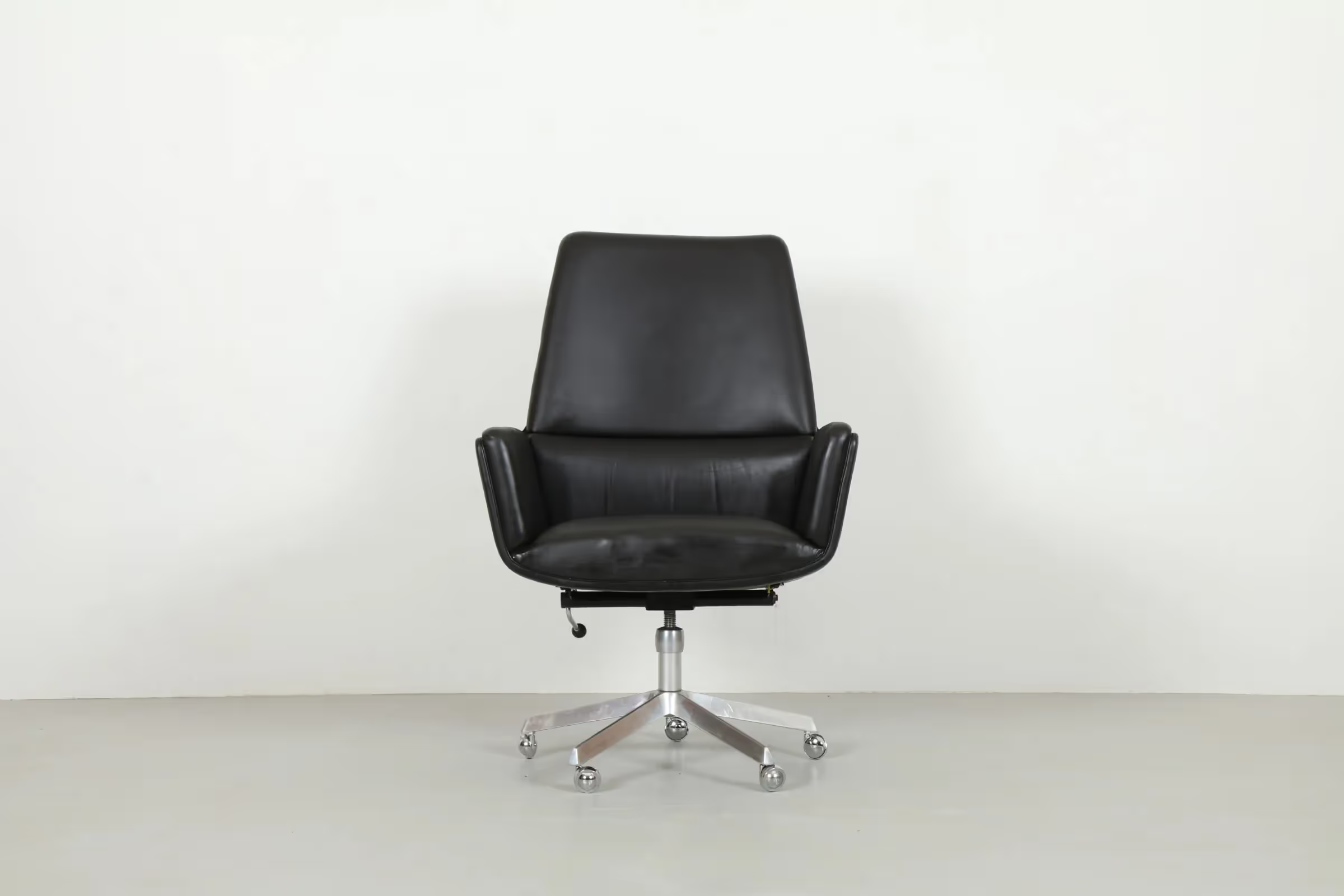
.svg)
.svg)
